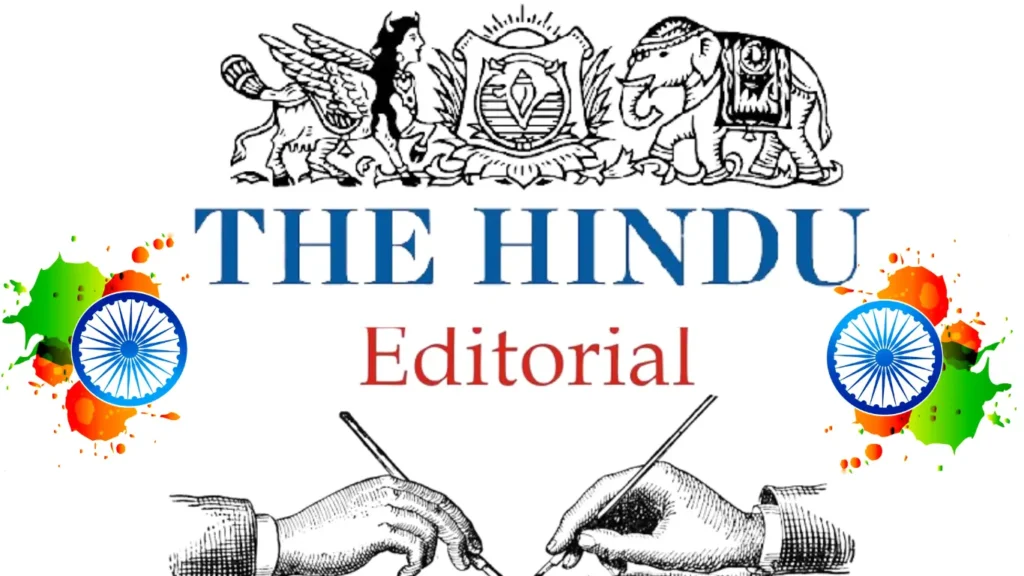Analysis of The Hindu Editorial 1: The NCrF as a framework for well-rounded education
Context:
The National Credit Framework (NCrF) is designed to help higher education institutions (HEIs) balance academic learning with vocational and skill-based education, preparing students for a rapidly changing world.
Introduction:
Some critics believe the reforms under the National Education Policy (NEP) 2020 are unnecessary. However, the NEP aims to modernize India’s education system, moving away from outdated methods.
About the New Education Policy:
The NEP is a visionary document that outlines how education in India can evolve. One key reform from the NEP is the NCrF, which provides a flexible framework for education at all levels, including schools, vocational training, and higher education. This allows HEIs to integrate academic, vocational, and skill-based learning and transfer credits across different disciplines.
Flexibility for Students:
With the NCrF, students can earn credits through a wide range of activities, including classroom learning, research, sports, internships, and community service. This flexibility helps create well-rounded individuals. However, some traditionalists are resistant to these changes, failing to see the value of adapting to modern educational needs.
The Need for Change:
India’s higher education system must evolve to stay relevant in a fast-changing world. The NCrF provides HEIs with the tools to remain competitive and prepare students for future job markets. HEIs should update their curricula to include skill development and practical learning to enhance student employability.
Emphasis on Skills:
Higher education should not only focus on knowledge production. Institutions must also equip students with practical skills for emerging careers. The NCrF enables this by fostering both academic and vocational growth.
Continuous Adaptation:
Reforming higher education is crucial for making it more accessible and equitable. HEIs need to continuously evolve to meet the needs of students and society. A multidisciplinary approach, as promoted by the NEP 2020, ensures that students receive both academic and skill-based education.
Increasing Social Mobility:
A flexible education system, as outlined in the NCrF, gives students the opportunity to gain practical skills alongside academic knowledge, helping them achieve better career opportunities and social mobility.
Way Forward:
HEIs should focus on both vocational training and academic research. The NCrF encourages a balance between these areas, ensuring students are well-prepared for the future. By integrating flexibility and multidisciplinary education, HEIs can help transform India into a global leader.
Conclusion:
To stay competitive in a rapidly evolving world, HEIs must adopt the NCrF’s flexible and multidisciplinary approach. This will not only benefit individual students but also contribute to India’s progress as an economic and technological powerhouse.
Analysis of The Hindu Editorial 2: It is an offence
Context:
The Supreme Court of India has taken a significant step in clarifying the law on accessing and storing online content related to child sexual abuse, ensuring better protection for children under the law.
Introduction:
The Supreme Court’s recent ruling aligns with the Protection of Children from Sexual Offences (POCSO) Act, reinforcing the legal consequences for those who view or store content involving child sexual abuse.
Need for Child Safety:
The Court acted in response to the growing issue of online content featuring the sexual exploitation of children. It emphasized that anyone accessing such material should be presumed to have a guilty intent. The Court also recommended replacing the term ‘child pornography’ with ‘Child Sexual Exploitative and Abuse Material’ (CSEAM) to accurately convey the seriousness of the offense.
Clarifying the Law:
The ruling provides clarity on the provisions of the Information Technology Act, 2000, and the POCSO Act, which had previously been interpreted differently by various High Courts.
Case Background:
The case arose from a Madras High Court judgment that dismissed charges against a person who viewed child sexual content, arguing that the law only penalized those who created or shared such material. The Supreme Court overruled this, stating that viewing or having control over such material, even without downloading or storing it, constitutes “possession” and is punishable under Section 15 of the POCSO Act.
Key Points:
- Viewing or controlling such material without reporting it is a crime.
- Platforms and intermediaries have a duty to remove harmful content and report it to the authorities.
- Section 67B of the IT Act is a comprehensive tool to combat online exploitation of children.
Call for Action:
The Court also advised the government to introduce sex education programs that explain the legal and ethical issues surrounding child sexual abuse material. This approach aims to create awareness and prevent the exploitation of children.
Conclusion:
The Supreme Court’s decision strengthens child protection laws by clearly defining the consequences of engaging with harmful online content. The shift in terminology from ‘child pornography’ to ‘Child Sexual Exploitative and Abuse Material’ highlights the seriousness of the issue. Digital platforms must act responsibly by removing such content, and there is a growing need for comprehensive sex education to protect children from exploitation.

